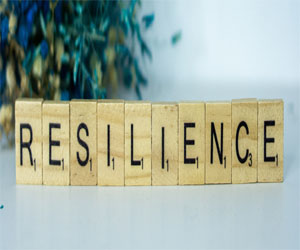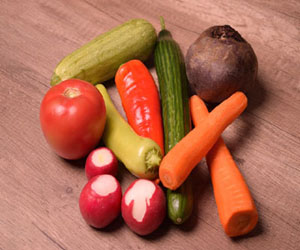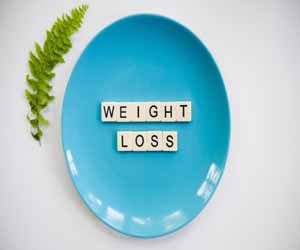


A Guide To Informed Choices

Gluten-free food labels have become a vital tool for those who need to avoid gluten due to celiac disease, non-celiac gluten sensitivity, or other health reasons. These labels serve as a key reference point for individuals to make safe and informed food choices. In this article, we will explore the importance of gluten-free food labels, what they mean, and how to effectively read and interpret them.
Understanding Gluten And Its Implications: First and foremost, it's crucial to understand what gluten is and why it matters for some individuals. Gluten is a protein found in wheat, barley, rye, and their derivatives. For people with celiac disease, even the tiniest amount of gluten can trigger an autoimmune response that damages the small intestine. Those with non-celiac gluten sensitivity may experience digestive discomfort and other symptoms when consuming gluten. Therefore, accurate gluten labeling is essential for their well-being.
The "Gluten-Free" Label: The most critical label to look for is "gluten-free." The "gluten-free" label signifies that the product contains less than 20 parts per million (ppm) of gluten. This threshold is considered safe for the vast majority of people with celiac disease. However, it's essential to remember that some individuals may still react to very low levels of gluten, so it's a personal decision how strict one wants to be.
The Benefits Of Gluten-Free Labels:
Clarity: Gluten-free labels provide clarity and peace of mind. When you see this label on a product, you can confidently purchase and consume it, knowing it meets gluten-free standards.
Efficiency: Gluten-free labels save time. They eliminate the need to scrutinize ingredient lists, which can be a tedious and potentially error-prone process.
Variety: The availability of gluten-free labeled products has expanded significantly in recent years. This means individuals on a gluten-free diet can enjoy a wide variety of foods and options that cater to their dietary needs.
Hidden Gluten Sources: Even when a product doesn't contain obvious gluten-containing ingredients, there might still be hidden sources of gluten. It's crucial to be aware of these potential pitfalls:
Cross-Contamination: Products that are processed in facilities that also handle gluten-containing foods can be at risk for cross-contamination. Manufacturers often label products with statements like "may contain traces of wheat" to indicate this risk.
Ambiguous Ingredients: Some ingredients can be derived from gluten-containing grains but don't always appear as "wheat," "barley," or "rye" on labels. Ingredients like "malt extract," "modified food starch," or "natural flavors" can contain gluten.
Additional Tips For Safe Label Reading:
Learn The Lingo: Familiarize yourself with common gluten-related terms and ingredients that can indicate the presence of gluten.
Ask Questions: If you have doubts about a product's gluten content, don't hesitate to contact the manufacturer for clarification.
Consult Apps And Websites: There are various smartphone apps and websites dedicated to gluten-free living that can help you quickly identify safe products and safe dining establishments.
Stay Informed: Keep up-to-date with changes in gluten labeling regulations and new products entering the market. The food industry is constantly evolving.
Gluten-free food labels are a valuable resource for individuals who need to avoid gluten. They provide clarity, efficiency, and peace of mind when making food choices. However, it's essential to remain vigilant about hidden sources of gluten and to continue educating yourself about gluten-related terms and ingredients. By understanding and confidently navigating gluten-free food labels, you can maintain a healthy and safe gluten-free lifestyle.


The Transformative Power Of Thankfulness
 Boosting Positivity: A gratitude practice helps us develop a more positive mindset. It encourages us to look for the silver lining in challenging situations and embrace a glass-half-full perspective. This positive outlook not only uplifts our mood but also enhances our overall mental well-being.
Boosting Positivity: A gratitude practice helps us develop a more positive mindset. It encourages us to look for the silver lining in challenging situations and embrace a glass-half-full perspective. This positive outlook not only uplifts our mood but also enhances our overall mental well-being.
Enhancing Self-Esteem: Expressing gratitude for our accomplishments and personal growth can boost our self-esteem. When we acknowledge our achievements, no matter how small, it reinforces our sense of self-worth. This, in turn, contributes to improved mental health and a more positive self-image.
Fostering Resilience: Gratitude is a tool that can help us bounce back from setbacks and adversity. By finding things to be thankful for even in challenging times, we build emotional resilience. This allows us to face life's difficulties with greater strength and adaptability.
Strengthening Relationships: Gratitude is not limited to self-reflection; it also extends to our relationships with others. Expressing appreciation and thankfulness toward friends, family, and colleagues fosters deeper and more meaningful connections. These relationships provide a vital support system for maintaining mental well-being.
Promoting Mindfulness: Gratitude encourages us to be present in the moment and notice the beauty and goodness around us. This practice aligns with mindfulness, a powerful tool for mental health. By being fully engaged in the present and appreciating it, we reduce rumination and promote a more peaceful state of mind.
To incorporate gratitude into your daily life and enhance your mental well-being, consider starting a gratitude journal. Each day, write down three things you are thankful for.
 Healthy Eating Habits
Healthy Eating Habits
Eating habits play a pivotal role in any weight loss journey. Adopting a balanced and nutritious diet is key. This involves consuming whole foods, emphasizing fruits and vegetables, incorporating lean proteins, and minimizing processed and sugary items. Portion control and mindful eating are crucial tools in managing caloric intake.
Regular Exercise
Exercise is a vital component of a successful weight loss journey. Incorporating regular physical activity into your routine helps burn calories, build muscle, and improve overall fitness. Activities such as cardio workouts, strength training, yoga, and even daily walks can contribute to weight loss and improved well-being.
Mindset And Motivation
A positive mindset and strong motivation are the driving forces behind a successful weight loss journey. It's important to stay focused on your goals and remind yourself of the reasons you started this journey in the first place. Seek inspiration from success stories, support from friends and family, and consider working with a coach or therapist to maintain motivation.
Patience And Persistence
A weight loss journey is not a quick fix but a lifelong commitment to better health. It's crucial to be patient with the process and to understand that there may be setbacks along the way.
A Path To Inner Strength
 How Mindfulness Builds Resilience
How Mindfulness Builds Resilience
Emotional Regulation: Mindfulness enables individuals to manage their emotions more effectively. By observing their feelings without judgment, they can respond to stress and adversity with greater emotional stability. This emotional regulation is a key component of resilience.
Stress Reduction: Mindfulness practices, such as meditation and deep breathing, are proven techniques for reducing stress. When stress is managed, individuals are better equipped to face challenges with a clear mind and a more balanced perspective.
Improved Problem-Solving: Mindfulness fosters a calm and focused mind, which is essential for effective problem-solving. When individuals encounter difficulties, they can approach them with a rational and creative mindset, leading to better solutions.
Enhanced Adaptability: Resilience is closely tied to adaptability. Mindfulness encourages individuals to accept change and uncertainty rather than resist them. This adaptability can be a powerful asset in the face of adversity.
Boosted Confidence: As individuals become more attuned to their thoughts and emotions through mindfulness, they often develop a greater sense of self-awareness and self-compassion. This, in turn, enhances their self-confidence and self-efficacy, crucial elements of resilience.
Practical Ways To Build Resilience Through Mindfulness
Mindful Meditation: Regular mindfulness meditation sessions can help individuals develop self-awareness and emotional regulation. Meditation practices often focus on breathing, body scans, and observing thoughts and emotions without attachment.
Gratitude Practice: Practicing gratitude is a form of mindfulness that can shift focus from negative thoughts to positive ones. Take time each day to reflect on what you're grateful for, cultivating a positive mindset.
Stress Reduction Techniques: Engage in deep-breathing exercises or progressive muscle relaxation when stress levels rise. These techniques can be calming and help individuals regain their emotional equilibrium.
Mindful Activities: Incorporate mindfulness into everyday activities. Whether it's eating mindfully, walking mindfully, or even washing dishes mindfully, these practices help ground individuals in the present moment.






Nature's Healing Bounty
 A Global Heritage Of Medicinal Plants
A Global Heritage Of Medicinal Plants
The use of medicinal plants is deeply ingrained in human history. Different cultures have harnessed the healing power of local flora, passing down knowledge from generation to generation. Indigenous peoples have traditionally relied on medicinal plants to address a wide spectrum of health issues, from digestive problems to wounds and infections. These traditions persist and continue to be valuable resources for herbal medicine.
Traditional Knowledge Meets Modern Science
The use of medicinal plants is not confined to historical practices; it's a dynamic field that intersects with modern science. In recent decades, there has been a resurgence of interest in traditional herbal medicine, prompting extensive scientific research into the efficacy of medicinal plants. This scientific validation has led to the development of herbal supplements and pharmaceutical drugs derived from natural plant compounds.
Common Medicinal Plants And Their Uses
Aloe Vera: Aloe vera is renowned for its soothing properties and is often used to treat burns, sunburn, and skin irritations.
Echinacea: Echinacea is a popular herbal remedy for boosting the immune system and reducing the severity and duration of colds.
Ginger: Ginger has well-documented anti-nausea and anti-inflammatory effects, making it an excellent remedy for motion sickness and digestive discomfort.
A Journey To Better Health
 2. Assess Your Reasons: Determine the driving factors behind your decision to transition to a gluten-free lifestyle. Whether it's due to a medical condition like celiac disease or non-celiac gluten sensitivity, or a choice for improved well-being, having clarity about your motivation can help you stay committed to the change.
2. Assess Your Reasons: Determine the driving factors behind your decision to transition to a gluten-free lifestyle. Whether it's due to a medical condition like celiac disease or non-celiac gluten sensitivity, or a choice for improved well-being, having clarity about your motivation can help you stay committed to the change.
3. Consult A Healthcare Professional: If you suspect you have a gluten-related medical condition, consult a healthcare professional for testing and diagnosis. They can provide guidance on the necessity of a gluten-free lifestyle and any specific dietary restrictions.
4. Read Labels Carefully: Effective label reading is essential for identifying gluten-free foods. Look for products that are explicitly labeled as "gluten-free." Also, educate yourself about potential hidden sources of gluten in ingredient lists.
5. Embrace Naturally Gluten-Free Foods: Naturally gluten-free foods include fruits, vegetables, lean proteins, and gluten-free grains like rice and quinoa. These items form the foundation of a nutritious gluten-free diet.
6. Stock Your Kitchen: Ensure your kitchen is well-stocked with gluten-free essentials. This includes gluten-free grains, gluten-free flours for baking, gluten-free pasta, and a variety of gluten-free snacks.
7. Experiment With Recipes: Transitioning to a gluten-free lifestyle provides an opportunity to explore new recipes and culinary techniques. Experiment with gluten-free flours and discover new flavors and textures that are unique to this way of eating.